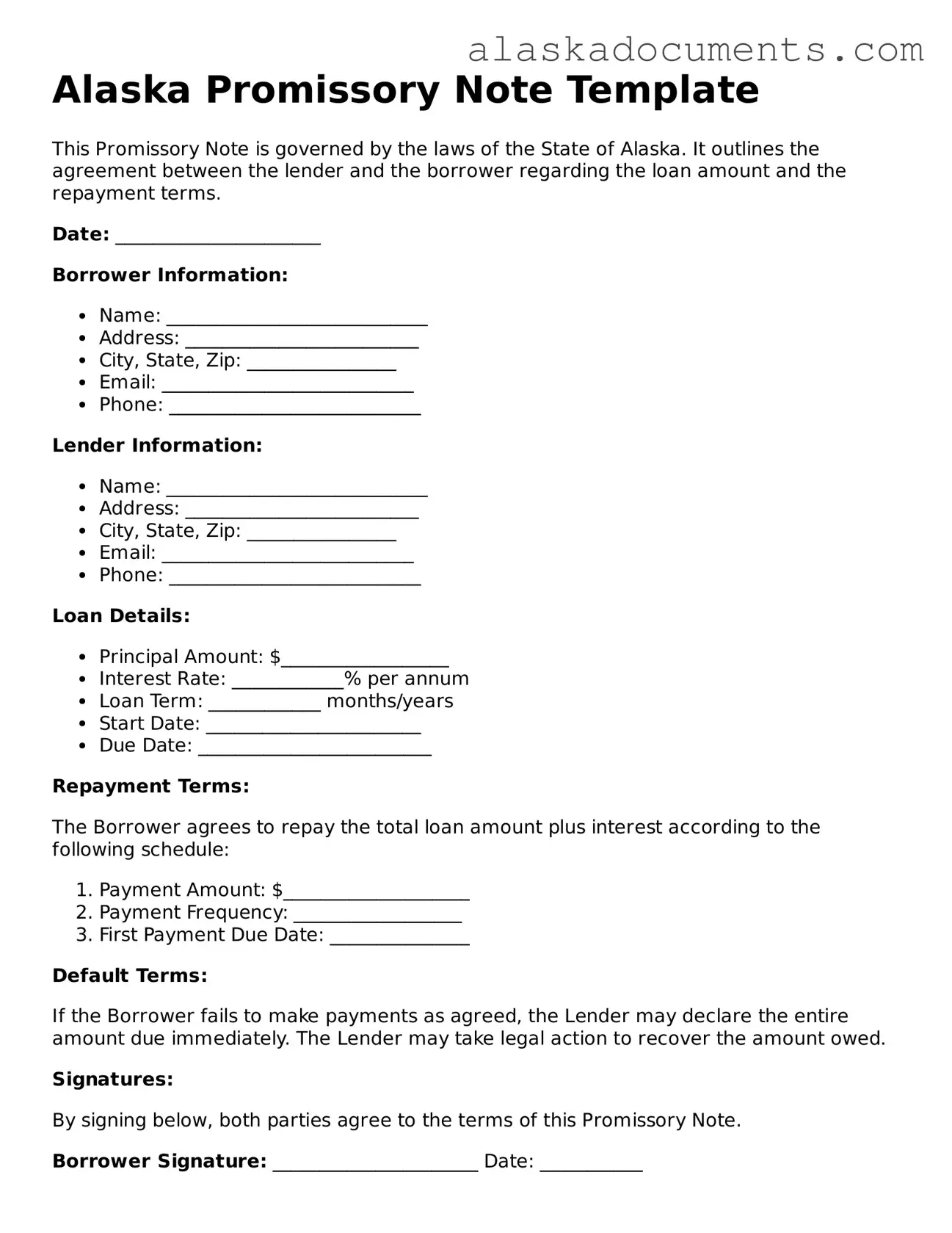The Alaska Promissory Note form shares similarities with the standard Promissory Note, a widely recognized document across the United States. Both forms serve the same fundamental purpose: they outline the borrower's promise to repay a specified amount of money to the lender under agreed-upon terms. These terms typically include the repayment schedule, interest rate, and consequences of default. Just like the Alaska version, the standard Promissory Note can be customized to fit the specific needs of the parties involved, ensuring clarity and mutual understanding.
Another document that bears resemblance to the Alaska Promissory Note is the Secured Promissory Note. This variation provides additional security for the lender by tying the loan to specific collateral. In both cases, the borrower commits to repaying the loan, but the Secured Promissory Note adds a layer of protection for the lender, allowing them to claim the collateral if the borrower defaults. This document can be particularly beneficial in high-risk lending scenarios, ensuring that both parties have a clear understanding of their rights and obligations.
The Loan Agreement is another document similar to the Alaska Promissory Note. While a Promissory Note primarily focuses on the borrower's promise to repay, a Loan Agreement encompasses a broader range of terms and conditions. This includes details about the loan's purpose, repayment terms, and any fees associated with the loan. Both documents aim to protect the interests of the lender and borrower, yet the Loan Agreement provides a more comprehensive framework for the lending relationship.
A personal loan agreement also shares characteristics with the Alaska Promissory Note. This type of document is often used between individuals rather than financial institutions. Like the Promissory Note, a personal loan agreement outlines the terms of the loan, including the amount borrowed, repayment schedule, and interest rate. However, it may also include additional clauses that address personal relationships, ensuring that both parties understand their responsibilities and expectations.
The Demand Note is another document that resembles the Alaska Promissory Note. A Demand Note allows the lender to request repayment at any time, without a fixed schedule. While both documents establish a borrower's obligation to repay, the Demand Note offers flexibility for the lender, who can call for repayment when they see fit. This can be advantageous in situations where the lender requires immediate access to their funds.
The Convertible Note is also similar to the Alaska Promissory Note, particularly in the context of startup financing. A Convertible Note is a short-term debt that can convert into equity in the borrowing company, typically during a future financing round. Both documents establish a promise to repay, but the Convertible Note introduces the potential for a different form of return on investment, aligning the interests of the lender with the growth of the business.
The Florida Motor Vehicle Bill of Sale form is a critical document that officially records the sale of a vehicle in the state. This legally binding contract proves that a transaction took place, detailing the agreement between the buyer and the seller. It serves not only as a receipt but also as an essential piece of documentation required for the transfer of the vehicle's title. For more information and templates related to this important form, you can visit smarttemplates.net.
Lastly, the Business Loan Agreement shares similarities with the Alaska Promissory Note, especially when the loan is intended for business purposes. Like the Promissory Note, this document outlines the terms of the loan, including repayment and interest rates. However, the Business Loan Agreement often includes specific provisions related to the operation of the business, such as financial reporting requirements and covenants that the borrower must adhere to, ensuring that the lender's investment is safeguarded.
